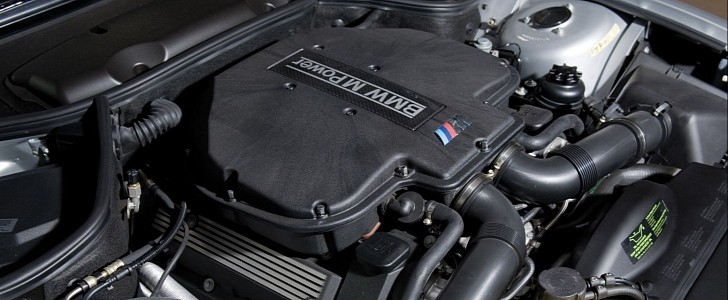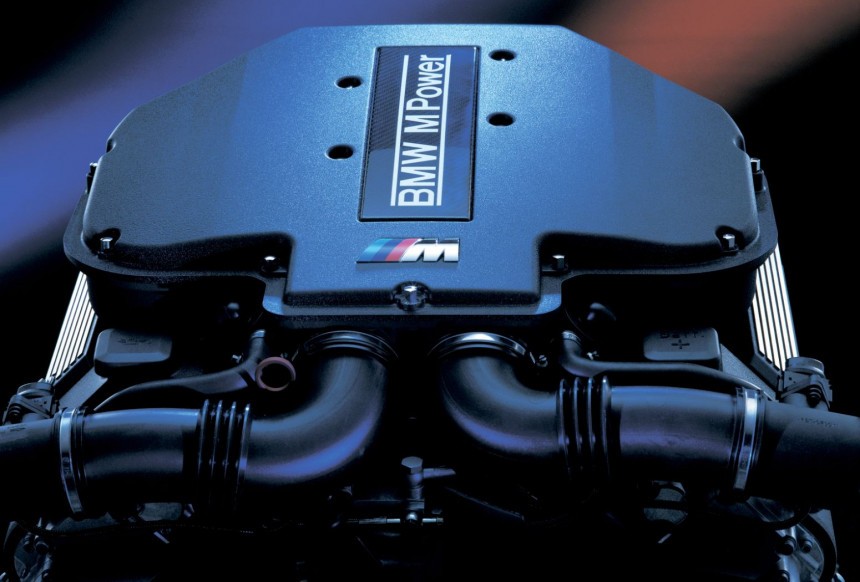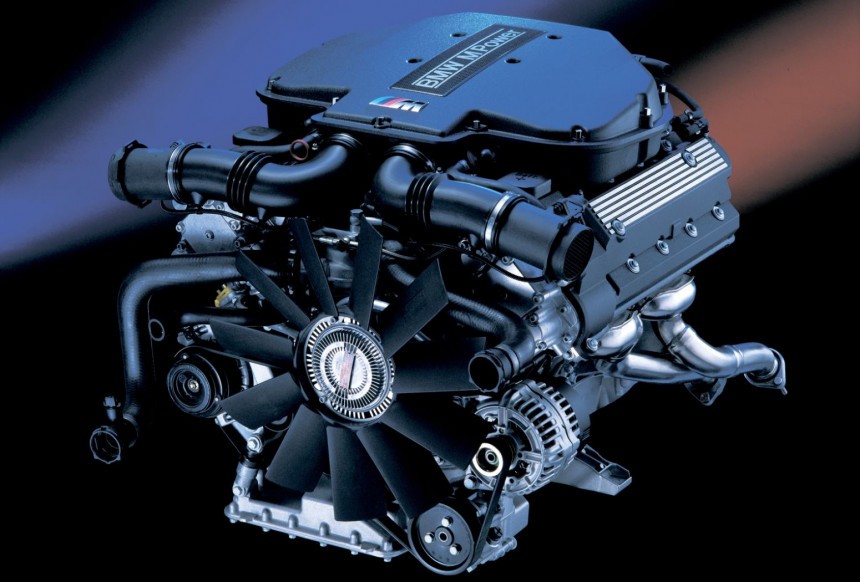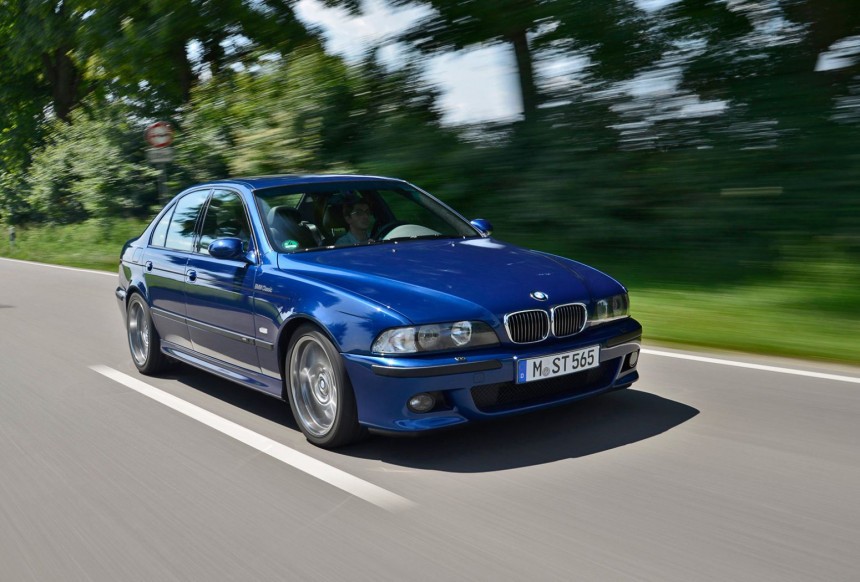In the late-1990s, BMW Motorsport was tasked with developing a high-performance version for the new 5 Series. Instead of beefing up an existing six-cylinder, as they had done in the past, the engineering wizards broke with tradition and worked their magic on a V8, which resulted in an epic powerplant.
Even though BMW road cars are nearly synonymous with great inline sixes, a V8 was found under the hood of various models from 1951 to 1965. However, 27 years would have to pass until the Bavarians built a successor. Introduced in 1992 with the codename M60, it powered the E34 5 Series, two generations of the 7 Series (E32, E38), and the E31 840i. Good but not great, it saw about four years of service in the aforementioned models, until it was replaced by a much better engine called M62.
A few years later, the new E39 5 Series family was ready to welcome a high-performance member. To satisfy the North American market’s craving for a powerful V8, but also obliterate the E 50 AMG Merc in Europe, BMW M decided to abandon the proven six-cylinder recipe and cook up a rabid version of the now-proven M62.
At the time, the most powerful M62 was the 540i’s 4.4-liter M62B44. Capable of 282 hp and 310 lb-ft (420 Nm) of torque, it was chosen as the base for the new M mill, but to extract more power, the engineers went on to extensively modify its architecture.
The bore was increased from 92 mm (3.62 inches) to 94 mm (3.70 inches) and the stroke rose from 82.7 mm (3.25 inches) to 89 mm (3.50 inches), which meant that the engine displacement went up to 4.9 liters.
Due to the larger bores, the cylinders were now only 4 mm (0.15 inches) apart, so to maximize block reliability, the cylinder linings were chemically etched to reduce friction as much as possible, while new multi-layer steel head gaskets were developed to ensure optimum sealing. These upgrades also aided the increase in compression ratio from 10.0:1 to 11.0:1.
Inside the aluminum block, the M62’s forged, five main-bearing counterweighted crankshaft was deemed strong enough to handle the extra power, and so were the forged, fracture-split conrods, but the hypereutectic pistons were completely new. With special cut-outs in the crowns to accommodate the intake and exhaust valves, each cylinder bank had specifically designed pistons.
Codenamed S62B50 (or S62, for short), the M powerplant was BMW’s first V8 to feature double-VANOS, the company’s variable valve timing system, on both the intake and exhaust camshafts.
Speaking of which, the new, nodular cast iron cams had more aggressive profiles that those of the stock M62, and they were hollowed out to reduce weight. The intake cams, as well as a higher-capacity water pump, were driven by a duplex (double-row) chain which replaced the simplex used on the base engine.
Other important improvements included a high-performance Siemens MSS 52 ECU, electronically actuated throttle bodies for each of the eight cylinders, dual air intakes and mass flow sensors, and a semi-dry-sump oiling system with two additional scavenging pumps which aided lubrication during hard cornering.
All these upgrades amounted to 394 hp at 6,600 rpm and 369 lb-ft (500 Nm) of torque at 3,800 rpm. Apart from those figures, which were a welcomed improvement over the 540i’s M62B44, the broad torque curve was the characteristic that made the S62 special. Around 90% was available from as low as 2,500 rpm and it only started to drop shorty above 5,000 rpm.
The first M V8 debuted in 1999 in the E39 M5 where it was linked with a Getrag 420G six-speed manual. It propelled the high-performance sedan to 60 mph (97 kph) from a standstill in 4.8 seconds and attained an electronically limited top speed of 155 mph (250 kph). According to the manufacturer, an unrestricted model managed to exceed 186 mph (300 kph) during initial tests, so thanks to the S62, the nearly 4,000-pound (1,814-kg) M5 was unofficially the fastest sedan of the 1990s.
The engine also saw use in another BMW, the exquisite Z8 produced from 2000 to 2003. Since the roadster was roadster 463 pounds (210 kg) lighter, it was about one second faster from 0 to 60 mph (0-97 kph).
In addition, the S62 was borrowed by the now-defunct British sports car manufacturer Ascari for their KZ1 road car, KZ1-R racer, and A10 prototype. Mounted mid-ship and modified even further, it could spit out from 500 to 625 horses, depending on the model.
Nowadays, this engine isn’t considered the best M-tuned V8, as the distinction goes to the newer S65 at the heart of the E90 M3. That being said, it was still an epic powerplant that went down in history as the first V8 from BMW M.
A few years later, the new E39 5 Series family was ready to welcome a high-performance member. To satisfy the North American market’s craving for a powerful V8, but also obliterate the E 50 AMG Merc in Europe, BMW M decided to abandon the proven six-cylinder recipe and cook up a rabid version of the now-proven M62.
At the time, the most powerful M62 was the 540i’s 4.4-liter M62B44. Capable of 282 hp and 310 lb-ft (420 Nm) of torque, it was chosen as the base for the new M mill, but to extract more power, the engineers went on to extensively modify its architecture.
Due to the larger bores, the cylinders were now only 4 mm (0.15 inches) apart, so to maximize block reliability, the cylinder linings were chemically etched to reduce friction as much as possible, while new multi-layer steel head gaskets were developed to ensure optimum sealing. These upgrades also aided the increase in compression ratio from 10.0:1 to 11.0:1.
Inside the aluminum block, the M62’s forged, five main-bearing counterweighted crankshaft was deemed strong enough to handle the extra power, and so were the forged, fracture-split conrods, but the hypereutectic pistons were completely new. With special cut-outs in the crowns to accommodate the intake and exhaust valves, each cylinder bank had specifically designed pistons.
Codenamed S62B50 (or S62, for short), the M powerplant was BMW’s first V8 to feature double-VANOS, the company’s variable valve timing system, on both the intake and exhaust camshafts.
Other important improvements included a high-performance Siemens MSS 52 ECU, electronically actuated throttle bodies for each of the eight cylinders, dual air intakes and mass flow sensors, and a semi-dry-sump oiling system with two additional scavenging pumps which aided lubrication during hard cornering.
All these upgrades amounted to 394 hp at 6,600 rpm and 369 lb-ft (500 Nm) of torque at 3,800 rpm. Apart from those figures, which were a welcomed improvement over the 540i’s M62B44, the broad torque curve was the characteristic that made the S62 special. Around 90% was available from as low as 2,500 rpm and it only started to drop shorty above 5,000 rpm.
The engine also saw use in another BMW, the exquisite Z8 produced from 2000 to 2003. Since the roadster was roadster 463 pounds (210 kg) lighter, it was about one second faster from 0 to 60 mph (0-97 kph).
In addition, the S62 was borrowed by the now-defunct British sports car manufacturer Ascari for their KZ1 road car, KZ1-R racer, and A10 prototype. Mounted mid-ship and modified even further, it could spit out from 500 to 625 horses, depending on the model.
Nowadays, this engine isn’t considered the best M-tuned V8, as the distinction goes to the newer S65 at the heart of the E90 M3. That being said, it was still an epic powerplant that went down in history as the first V8 from BMW M.














